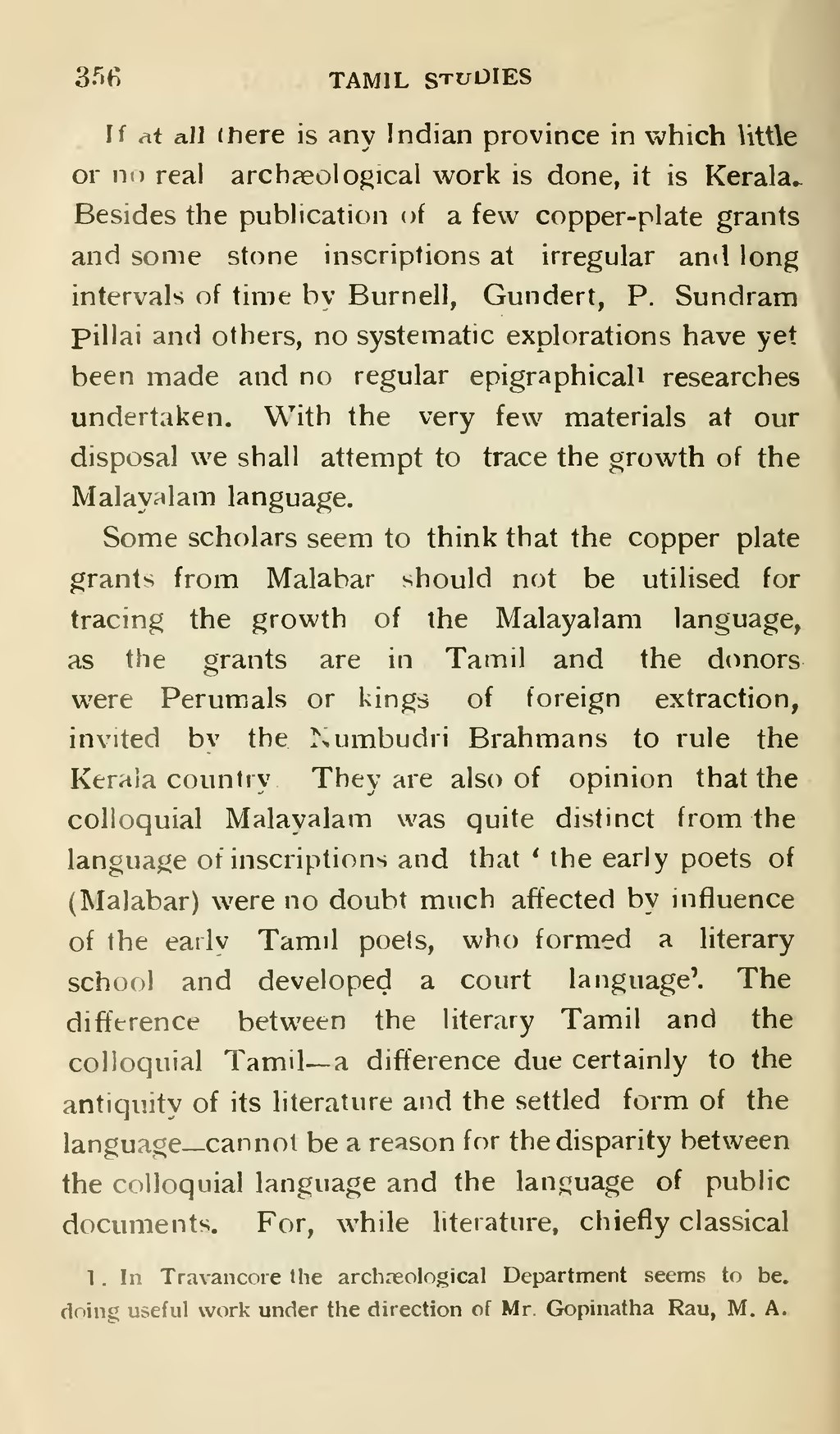If at all there is any Indian province in which little or no real archæological work is done, it is Kerala. Besides the publication of a few copper-plate grants and some stone inscriptions at irregular and long intervals of time by Burnell, Gundert, P. Sundram Pillai and others, no systematic explorations have yet been made and no regular epigraphical[1] researches undertaken. With the very few materials at our disposal we shall attempt to trace the growth of the Malayalam language.
Some scholars seem to think that the copper plate grants from Malabar should not be utilised for tracing the growth of the Malayalam language, as the grants are in Tamil and the donors. were Perumals or kings of foreign extraction, invited by the Numbudri Brahmans to rule the Kerala country. They are also of opinion that the colloquial Malayalam was quite distinct from the language of inscriptions and that 'the early poets of (Malabar) were no doubt much affected by influence of the early Tamil poets, who formed a literary school and developed a court language'. The difference between the literary Tamil and the colloquial Tamil—a difference due certainly to the antiquity of its literature and the settled form of the language—cannot be a reason for the disparity between the colloquial language and the language of public documents. For, while literature, chiefly classical
- ↑ In Travancore the archaeological Department seems to be. doing useful work under the direction of Mr. Gopinatha Rau, M. A.
